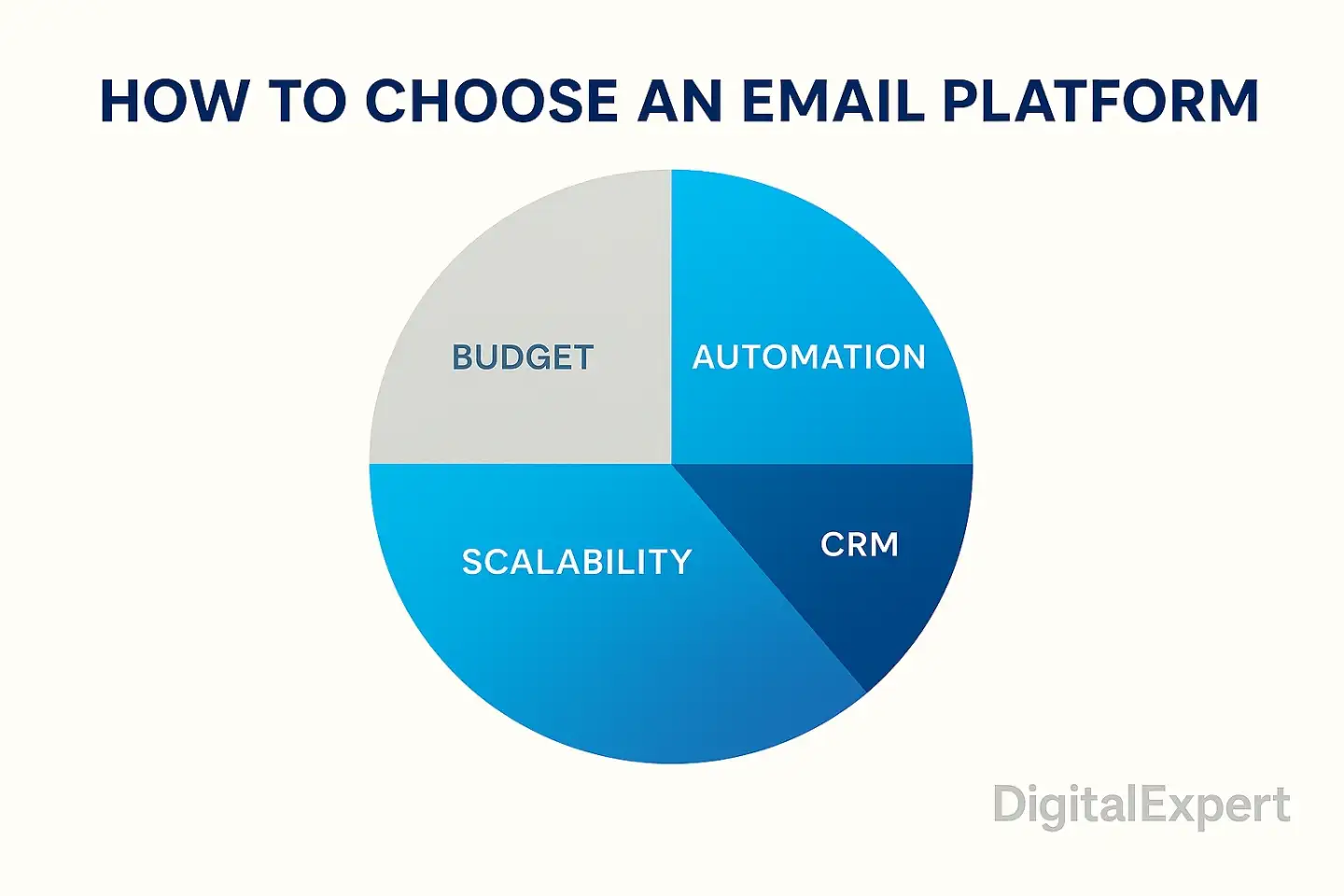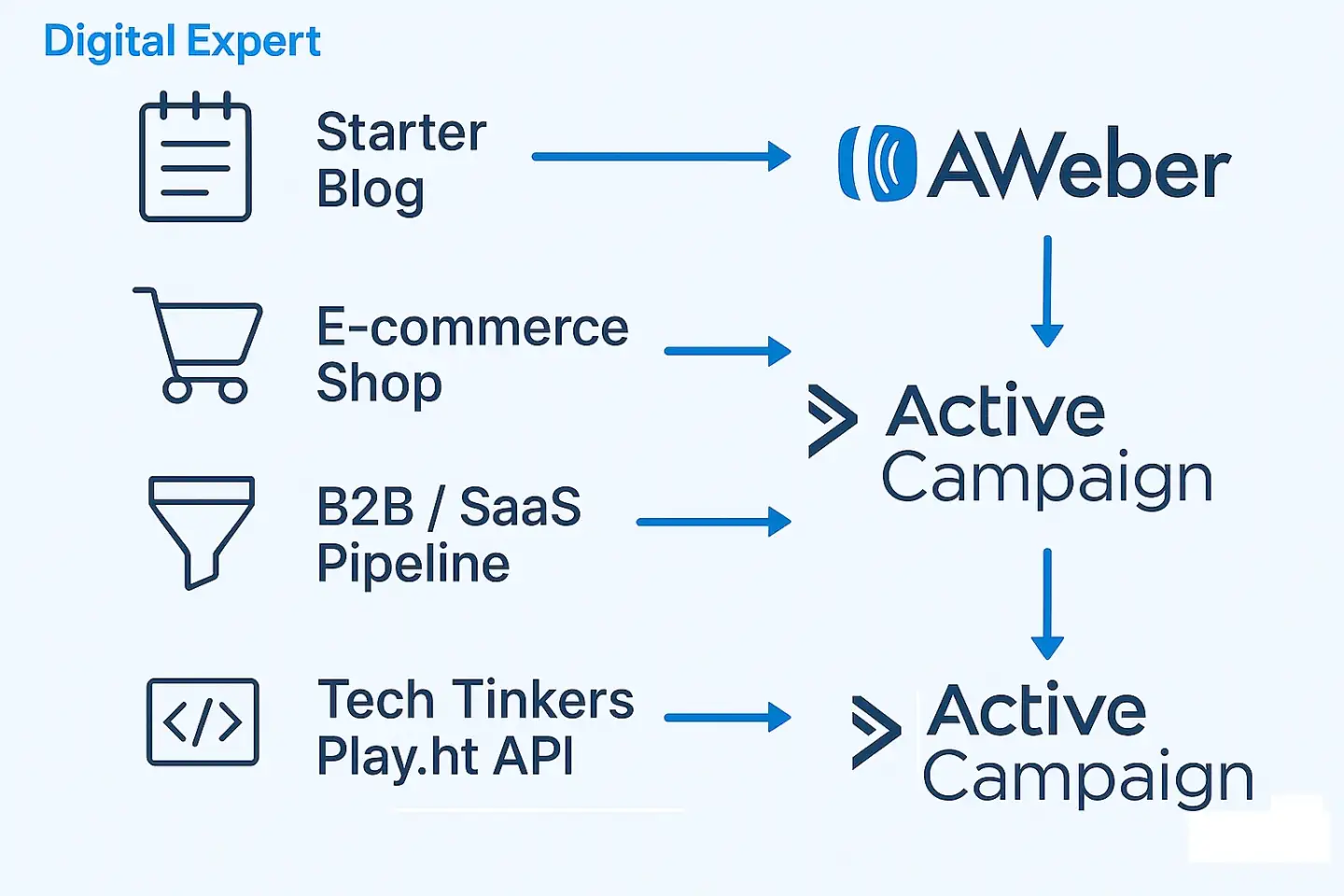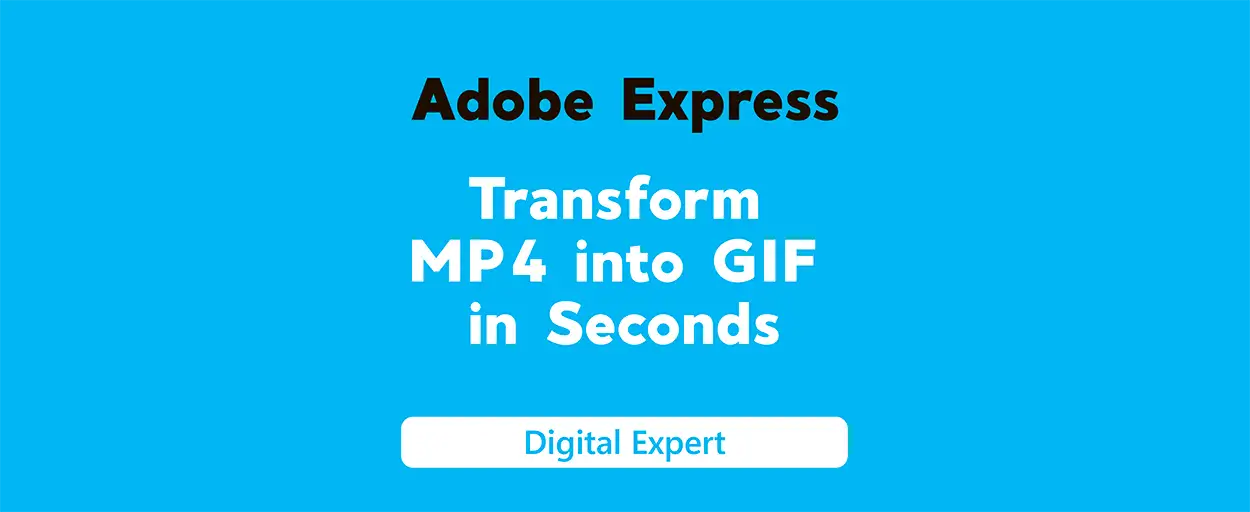The competition in email inboxes has reached unprecedented levels so selecting your email platform for 2025 will either boost your growth or restrict it. The ongoing battle between AWeber and ActiveCampaign requires a new evaluation because both platforms have transformed from basic list sending tools into automated ecosystems that serve different needs and budgets and skill ranges.
The following sections compare ActiveCampaign with AWeber through a detailed analysis of their automation capabilities and CRM features and pricing models and deliverability performance and additional aspects to help you find the perfect solution for your marketing needs.
Before making a commitment you should bookmark our handpicked list of top marketing tools for a complete mar-tech stack overview.
What is AWeber?
AWeber launched as the first autoresponder service in 1998 and has since developed into a streamlined email automation platform for creators and freelancers and small businesses that require fast solutions over complicated ones in the AWeber vs ActiveCampaign comparison.
Features
Drag-and-drop Campaign Builder – set visual flows on sign-ups, purchases, or tag changes in minutes.
Smart Designer – scrapes your site to create on-brand templates automatically.
Interactive AMP emails – insert polls, product carousels, or in-message checkout to boost clicks.
Simple segmentation – target by tag, behaviour, or geo without SQL-level filters.
24/7 live chat & phone support – uncommon in this price tier.
Need a benchmark on automation builders? See how they differ in our AWeber automation review.
Pricing
Tier |
Subscribers |
Monthly cost |
Core inclusions |
|---|---|---|---|
Free |
≤ 500 |
$0 |
Newsletters, 1 list, basic automation |
Pro |
501 – 25 000+ |
From $12.50 |
Unlimited lists, split tests, AMP, advanced segmentation |
Pros and cons
✔ Strengths |
✖ Limitations |
|---|---|
Quick setup—import, tag, send |
Lacks native CRM and sales pipelines |
Forever-free plan covers tiny lists |
Automation logic flatter than ActiveCampaign’s goals & splits |
AMP interactivity boosts engagement stats |
Integration catalogue (~150) trails ActiveCampaign’s 900+ |
24/7 phone support, even on Free |
Reporting sticks to opens/clicks—no attribution or cohorts |
AWeber is a solid pick for sending straightforward campaigns quickly and without breaking the budget. But when advanced workflows, integrated CRM tools, and performance-driven insights start to matter, ActiveCampaign clearly takes the lead. If you're aiming to build more than just newsletters, the next section breaks down exactly where these two platforms part ways.
What is ActiveCampaign?
Launched as a flexible email marketing tool, ActiveCampaign has evolved into a robust automation platform for growing ecommerce brands, SaaS companies, and B2B teams. With native CRM, dynamic segmentation, and predictive triggers, it offers far more than email—making it the preferred choice in the AWeber and ActiveCampaign comparison for businesses focused on lifecycle marketing, not just sending campaigns.
Features
Visual automation builder – Goals, Split Paths, and live contact view let marketers design branching journeys without code.
Built-in sales CRM – deal pipelines, task queues, lead scoring, and win probability live alongside campaigns.
Predictive sends & actions – machine-learning picks the moment each subscriber is most likely to open or buy.
Site & event tracking – tag users the instant they hit pricing pages, abandon a cart, or cross a spend threshold.
950+ native integrations – Shopify, Slack, Stripe, and Zoom plug in directly; open API covers the rest.
Deliverability leadership – third-party tests keep inbox placement above 85 %, minimising spam losses.
24/7 live chat (phone on Pro+) – fast human help when workflows get tricky.
Need a deeper tour of the builder? Skim our ActiveCampaign automation guide before you benchmark further.
Pricing
Tier |
Contacts allowed |
Monthly cost |
Essential components |
|---|---|---|---|
Lite |
Up to 1 000 |
$29 |
Core automations, one user, chat/email support |
Plus |
Up to 5 000 |
$49 |
CRM, lead scoring, SMS, 25 users |
Professional |
Up to 10 000 |
$149 |
Predictive send, split automations, in-app guidance, phone support |
Enterprise |
Custom |
Quote |
SLA, dedicated IP, custom reporting, unlimited users |
Pros and cons
✔ Strengths |
✖ Limitations |
|---|---|
Deep automation & CRM in one dashboard |
No forever-free plan (14-day trial only) |
Predictive features lift revenue metrics |
Feature set can feel dense to first-timers |
900+ integrations reduce Zapier overhead |
Phone support starts at Professional tier |
Consistently high inbox rates |
Contact-based pricing may climb for huge lists |
Top user ratings (4.7/5 average) |
Requires thoughtful setup to unlock full power |
In any AWeber vs ActiveCampaign showdown, ActiveCampaign wins on automation depth, unified CRM, and data-driven personalisation—advantages that only grow as your list and revenue goals expand. If those factors drive your roadmap, ActiveCampaign belongs at the top of your shortlist.
Core Capabilities Compared
Choosing between ActiveCampaign and AWeber often comes down to how deep you need to go with automation, CRM, and reporting. The quick scorecard below highlights the decisive differences.
Feature |
ActiveCampaign |
AWeber |
Verdict |
|---|---|---|---|
Ease of use |
Intuitive drag-and-drop UI, contextual tips, guided onboarding flows |
Simple menu-driven interface, fewer contextual cues |
ActiveCampaign – faster learning curve for complex tasks |
Automation depth |
Visual journey builder, 750+ pre-built recipes, goals & splits, site tracking |
Basic autoresponder sequences, limited branching |
ActiveCampaign – richer workflow logic boosts ROI |
CRM & segmentation |
Built-in CRM with deals, lead scoring, predictive sending |
Tag-based lists only, no deal pipeline |
ActiveCampaign – unified sales-marketing data |
Email templates & design |
250+ modern templates, dynamic content blocks, conditional sections |
~100 templates, static blocks, fewer layout controls |
ActiveCampaign – more design freedom |
Reporting & analytics |
Funnel, cohort, win-probability, attribution dashboards |
Opens, clicks, simple list growth charts |
ActiveCampaign – granular insights for scaling |
Integrations |
900+ native apps (Shopify, Slack, Zapier); open API |
~150 apps; reliant on Zapier for depth |
ActiveCampaign – broader ecosystem |
Scalability |
Contact-based pricing but advanced Lite plan starts at 1 000 contacts; enterprise options |
Tiered pricing caps many features until higher tiers |
ActiveCampaign – grows without major feature gates |
Why this matters: Anyone planning advanced lifecycle journeys, multichannel triggers, or integrated sales pipelines gains a clear edge with ActiveCampaign. Readers who need only basic broadcasts might still prefer AWeber — but they should weigh that against the long-term flexibility highlighted here.
For another point of view on workflow builders, explore our ActiveCampaign vs Omnisend comparison.
Pricing
Plan |
ActiveCampaign (contact-based tiers) |
AWeber (subscriber-based tiers) |
|---|---|---|
Free option |
14-day full-feature trial (no credit card) |
Forever-free for ≤ 500 subscribers, but automation and split-testing disabled |
Entry tier |
Lite – from $29/mo for 1 000 contacts; all core automations, CRM, reporting included |
Lite – from $12.50/mo for 500 subs; advanced automations locked, no CRM |
Growth tier |
Plus – from $49/mo adds split automation, lead scoring, SMS, 25 users |
Unlimited – from $20/mo removes list cap but still lacks CRM & predictive send |
Enterprise |
Custom pricing; SLA, dedicated IP, in-app onboarding |
Max plan tops at $149/mo; no dedicated IP, limited onboarding |
While AWeber’s headline prices start lower, feature gates mean serious marketers pay quickly for add-ons—or accept limits. ActiveCampaign rolls automation, CRM, predictive send, and multichannel tools into each tier, so cost only rises with list size, not necessary features.
Selection Criteria

When comparing AWeber vs ActiveCampaign, focus on the factors below—each one pushes power-users toward ActiveCampaign while leaving room for lighter AWeber use cases.
Scaling cost: AWeber’s tiers stay cheap but cap features; ActiveCampaign grows price-for-list size without hard limits.
Automation muscle: Visual journeys, goals, and predictive sends make activecampaign vs aweber a one-sided match.
CRM built-in: Deals and scoring live inside ActiveCampaign—AWeber offers only tags.
Dynamic design: Conditional content blocks beat AWeber’s static templates.
Native ecosystem: 900+ integrations (Shopify, Slack) vs AWeber’s lean list—see other tools in our email automation catalog.
Revenue analytics: Funnel and attribution dashboards outshine basic open/click stats.
When the decision hinges on advanced automation, unified CRM data, or long-term scalability, the ActiveCampaign and AWeber debate tips decisively toward ActiveCampaign. Teams simply broadcasting newsletters on a tight budget can still extract value from AWeber’s simpler toolkit, but they’ll sacrifice the headroom showcased above.
Who Should Use Which Tool?

Starter blogs & side hustles
Tight budget, simple newsletters, and no need for CRM? AWeber covers the basics without pushing up costs. It beats spreadsheets, but if you outgrow broadcast-only sends you’ll revisit the AWeber vs ActiveCampaign question fast.Growing e-commerce brands
Cart-abandon triggers, product-specific recommendations, and Shopify flows demand deeper automation. ActiveCampaign’s visual journeys, dynamic content, and 900+ native apps remove the plugin sprawl many stores fight.B2B/SaaS sales teams
Deals, lead scoring, multi-step nurturing, and pipeline tasks live natively in ActiveCampaign’s CRM. Tag-only segmentation from AWeber can’t mirror that complexity.
Put simply, AWeber vs ActiveCampaign isn’t a close race once automation depth, CRM data, and multichannel scaling enter the picture. AWeber serves lean newsletters; ActiveCampaign powers revenue-driven growth.
Customer Feedback & Ratings
Below is the revamped review snapshot—laid out just like you asked—with ActiveCampaign clearly edging out its rival.
Metric |
ActiveCampaign |
AWeber |
|---|---|---|
Overall rating |
⭐⭐⭐⭐⭐ (4.7 / 5) |
⭐⭐⭐⭐☆ (4.2 / 5) |
Review volume |
9 200+ public reviews (G2, Capterra, TrustRadius) |
3 800+ public reviews |
Ease of use (top comment) |
“Visual automations make complex journeys simple.” |
“Great for basic newsletters, but limited controls.” |
Support sentiment |
24/7 live chat & in-app tutorials praised for speed |
Email support noted as helpful, but slower on advanced issues |
When real users weigh ActiveCampaign vs AWeber — from interface clarity to post-sale help—ActiveCampaign collects more stars and warmer comments, reinforcing every advantage outlined in the feature comparison.
Why ActiveCampaign Wins
Facing the AWeber and ActiveCampaign question, teams seeking growth-grade email marketing features find four decisive advantages:
Automation you can actually scale. Visual journeys, conditional splits, and predictive send times turn funnel ideas into revenue without extra plugins.
CRM built for revenue, not just lists. Deals, lead scoring, and task queues live inside the same dashboard, so marketing and sales stop passing spreadsheets—a gap AWeber’s tag system can’t close.
Data where you need it. With 900+ native integrations, ActiveCampaign syncs Shopify carts, Slack alerts, and Facebook leads in seconds. That breadth removes Zapier fees and delays.
User-proven reliability. Higher ratings on G2, Capterra, and TrustRadius back up the feature lead; support scores stay above 4.5/5 even at scale.
Flip the headline — ActiveCampaign vs AWeber — and the story stays the same: if growth, automation depth, or sales alignment is on your roadmap, ActiveCampaign delivers more headroom now and fewer migration headaches later.
Conclusion
The comparison between AWeber and ActiveCampaign reveals that ActiveCampaign provides visual automation tools and built-in CRM and advanced analytics which AWeber lacks. The 900-plus integrations of ActiveCampaign eliminate the need for patch-work zaps and user ratings support this choice.
AWeber provides reliable broadcasting capabilities for hobby newsletters and ultra-lean budgets. Everyone else—from an e-commerce brand planning cart-abandon flows to a SaaS team aligning sales and marketing—will save time and earn more by choosing ActiveCampaign first, not upgrading later.
Still weighing your options? If you're looking for the best value, check out our ActiveCampaign deal breakdown to see how much you can save on top-tier features. For side-by-side tool insights, don't miss our full comparison of Omnisend vs Brevo. No matter where you start, it’s clear: ActiveCampaign unlocks advanced automations and CRM capabilities that AWeber simply doesn’t match.
Last updated: 30.04.2025
FAQ
No. AWeber uses tags and lists for segmentation but lacks a CRM system of its own. You will need to link third-party tools to access pipelines and deal stages and sales automation features. The CRM system in ActiveCampaign provides users with full-featured capabilities for task management and deal tracking and lead scoring.
ActiveCampaign wins here. The platform enables users to create advanced automation logic through visual workflows which include conditional branches and event tracking and predictive sending capabilities. The platform provides autoresponders and basic visual flows yet it does not support behavior-driven triggers or complex workflow operations.
Yes, and it’s straightforward. ActiveCampaign enables users to import contacts while providing assistance for migrating forms and automations. The platform enables users to connect with multiple tools that AWeber users currently depend on thus simplifying their transition.
The forever-free plan from AWeber allows subscribers to have up to 500 subscribers but it restricts automation capabilities and features. Users can access ActiveCampaign's entire core feature set through a 14-day free trial. The trial duration of ActiveCampaign gives users better value for their long-term automation and CRM needs than AWeber's free plan.
The results of independent testing indicate ActiveCampaign delivers messages to inboxes at a rate above 85%. The higher tiers of ActiveCampaign include deliverability controls such as dedicated IPs and predictive content testing and message previews which AWeber does not offer.
The platform ActiveCampaign provides specific tools for ecommerce businesses to recover carts and send purchase follow-ups and product recommendations while offering extensive Shopify integration capabilities. The ecommerce capabilities of AWeber are limited because it offers fewer triggers and reduced flexibility.












